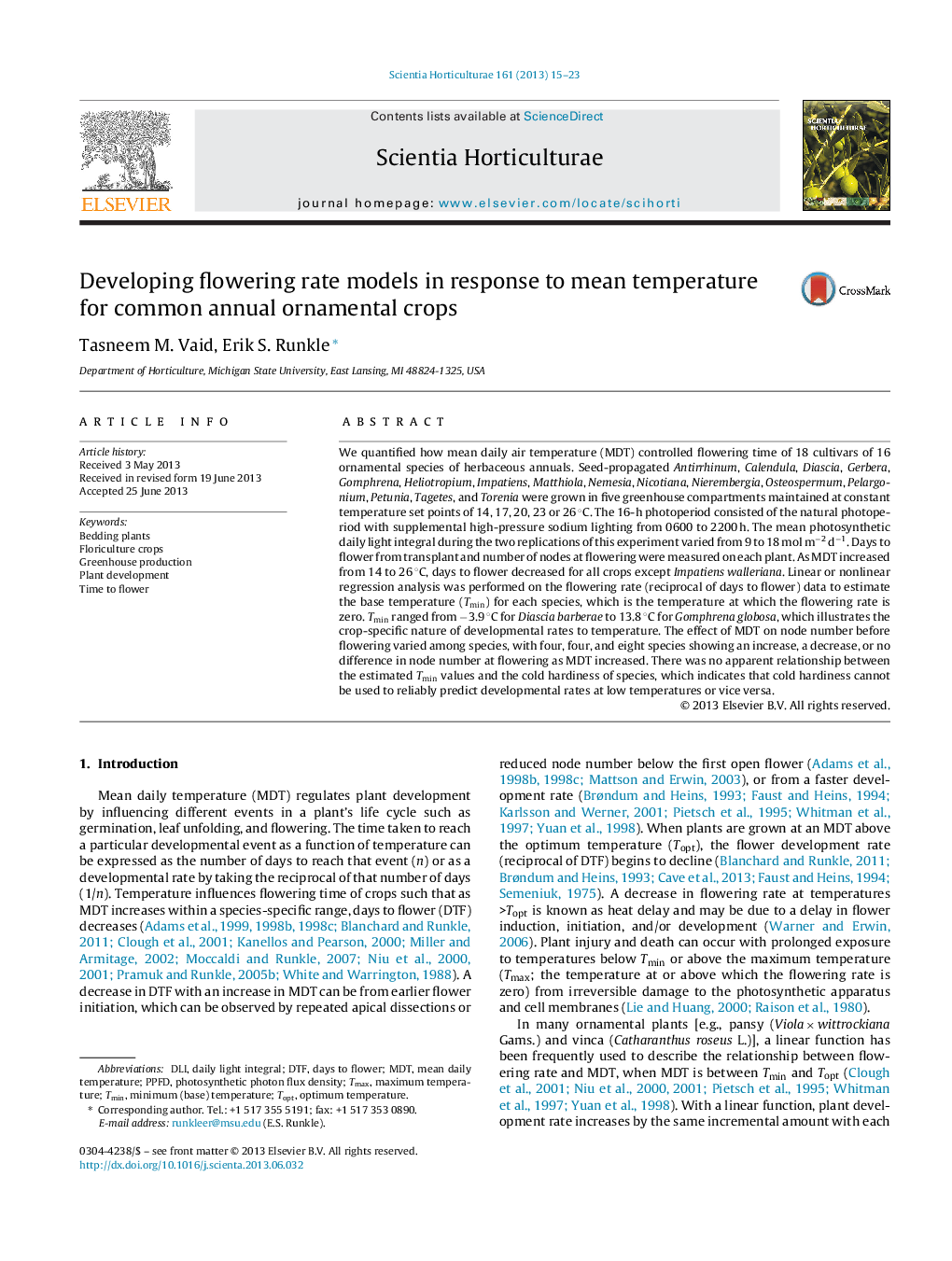| کد مقاله | کد نشریه | سال انتشار | مقاله انگلیسی | نسخه تمام متن |
|---|---|---|---|---|
| 4567133 | 1628837 | 2013 | 9 صفحه PDF | دانلود رایگان |

• A variety of garden plants were grown at 14–26 °C from transplant to flowering
• Mathematical models were generated to predict thermal flowering rates
• The estimated base temperature ranged from −3.9 to 13.8 °C
• Flowering rate models can be used to improve greenhouse crop scheduling
• There was no relationship between the reported cold hardiness and base temperature
We quantified how mean daily air temperature (MDT) controlled flowering time of 18 cultivars of 16 ornamental species of herbaceous annuals. Seed-propagated Antirrhinum, Calendula, Diascia, Gerbera, Gomphrena, Heliotropium, Impatiens, Matthiola, Nemesia, Nicotiana, Nierembergia, Osteospermum, Pelargonium, Petunia, Tagetes, and Torenia were grown in five greenhouse compartments maintained at constant temperature set points of 14, 17, 20, 23 or 26 °C. The 16-h photoperiod consisted of the natural photoperiod with supplemental high-pressure sodium lighting from 0600 to 2200 h. The mean photosynthetic daily light integral during the two replications of this experiment varied from 9 to 18 mol m−2 d−1. Days to flower from transplant and number of nodes at flowering were measured on each plant. As MDT increased from 14 to 26 °C, days to flower decreased for all crops except Impatiens walleriana. Linear or nonlinear regression analysis was performed on the flowering rate (reciprocal of days to flower) data to estimate the base temperature (Tmin) for each species, which is the temperature at which the flowering rate is zero. Tmin ranged from −3.9 °C for Diascia barberae to 13.8 °C for Gomphrena globosa, which illustrates the crop-specific nature of developmental rates to temperature. The effect of MDT on node number before flowering varied among species, with four, four, and eight species showing an increase, a decrease, or no difference in node number at flowering as MDT increased. There was no apparent relationship between the estimated Tmin values and the cold hardiness of species, which indicates that cold hardiness cannot be used to reliably predict developmental rates at low temperatures or vice versa.
Journal: Scientia Horticulturae - Volume 161, 24 September 2013, Pages 15–23